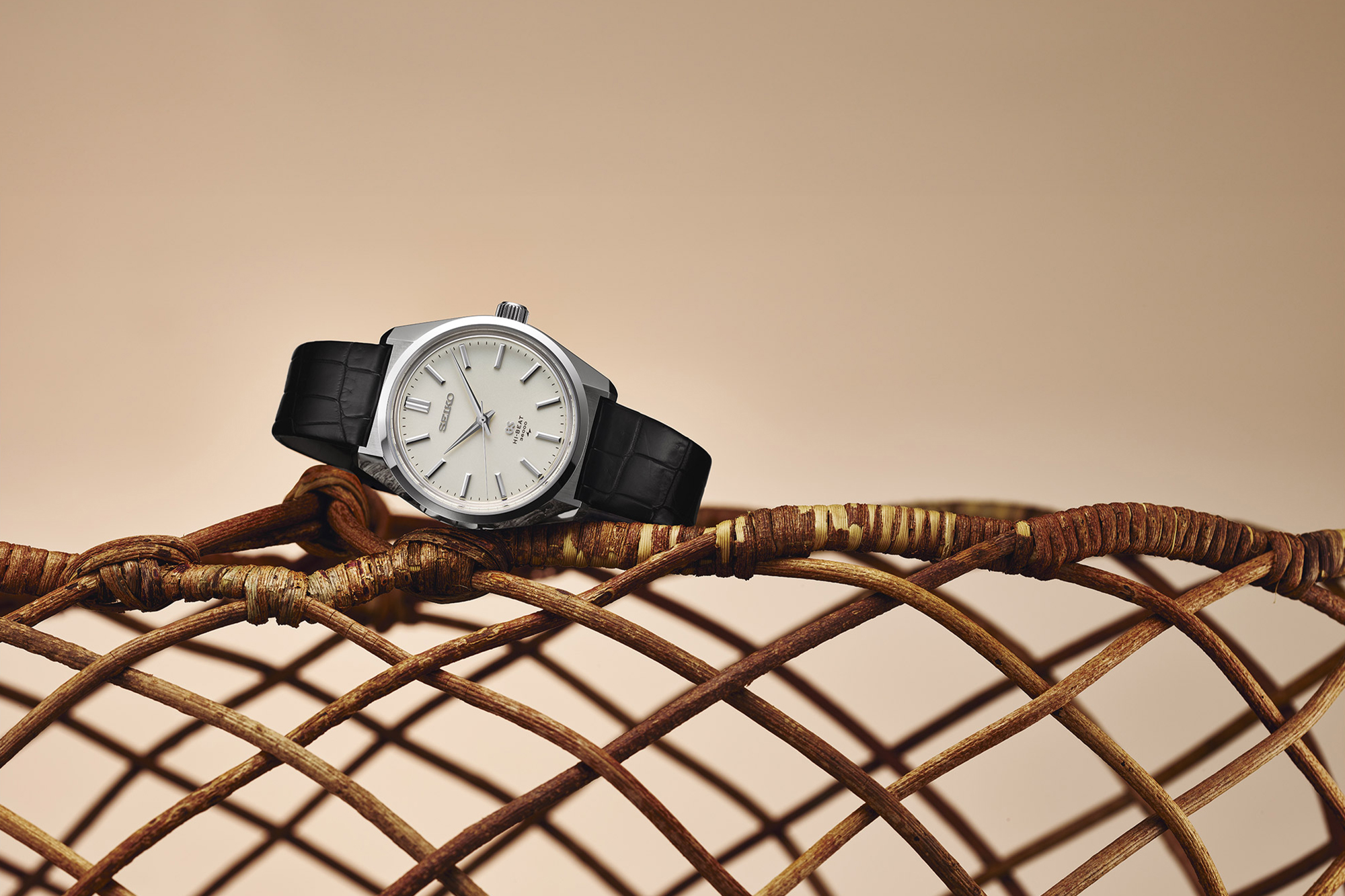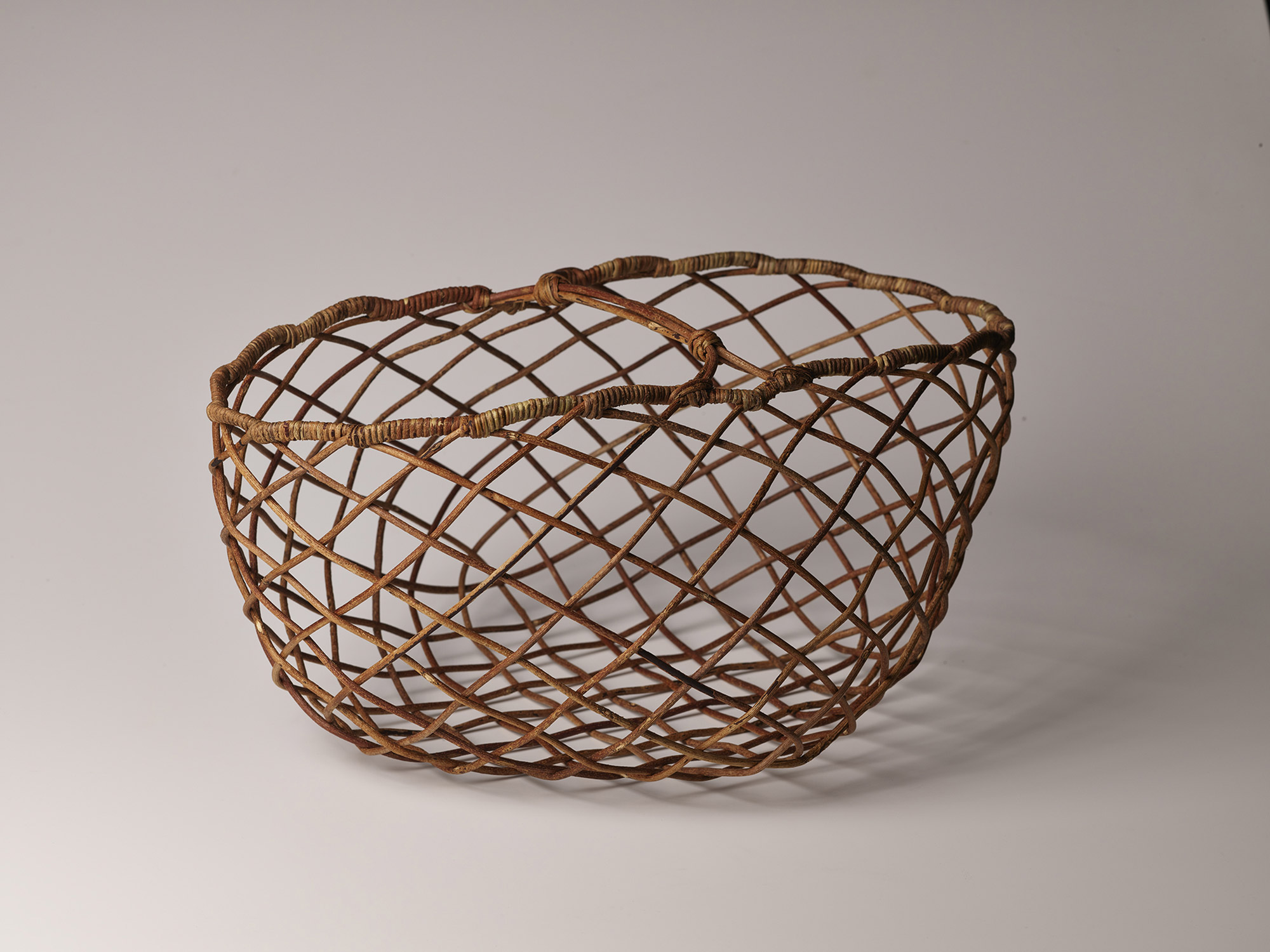
Baskets made of the akebi vine, known as “akebia” in English, have been crafted across a wide area of Japan’s Tohoku region, including Yamagata and Akita Prefectures, near Iwate Prefecture, home of Grand Seiko mechanical watchmaking. Although they were originally used as ordinary items for farmers, today the baskets are cherished by those who prefer natural products. Moe Watanabe’s artworks use akebia vines she has personally harvested from the mountains of Yamagata. By daring to weave them loosely, she beautifully expresses the flexibility and lightness the vines naturally had before the harvest. Watanabe’s “Lightweight Woven Basket with a Handle” looks apparently simple but shows different expressions depending on the viewing angle or how the light falls. Its beauty can be occasionally highlighted by light but is also accentuated by shadow, a quality reminiscent of the design of the 45GS, which was born in 1968 and retains all of its charm.

The re-creation of the 45GS limited edition pays homage to a watch born in 1968 that featured Grand Seiko’s first manual-winding 10-beat movement. The new creation closely follows the original case and dial design. At the 12 o’clock position appear the Seiko letters, which have been made to reimagine the vintage character of the original lettering. At the six o’clock position appear the GS and Hi-Beat letters; the number 36000, which signifies the high frequency of the movement; and the Daini Seikosha factory logo, indicating the birthplace of the original 45GS. The original angular case design, which featured flat, mirror-polished surfaces and curved case sides, has been re-created using Grand Seiko’s latest watchmaking technology. Its design achieves a remarkable brilliance based on the characteristic interplay of light and shadow that was established with the Grand Seiko Style. This classic stainless steel wristwatch is comfortable, pleasant to hold and look at, and practical.
Photography = Naohiro Tsukada
Text = Natsuki Ando